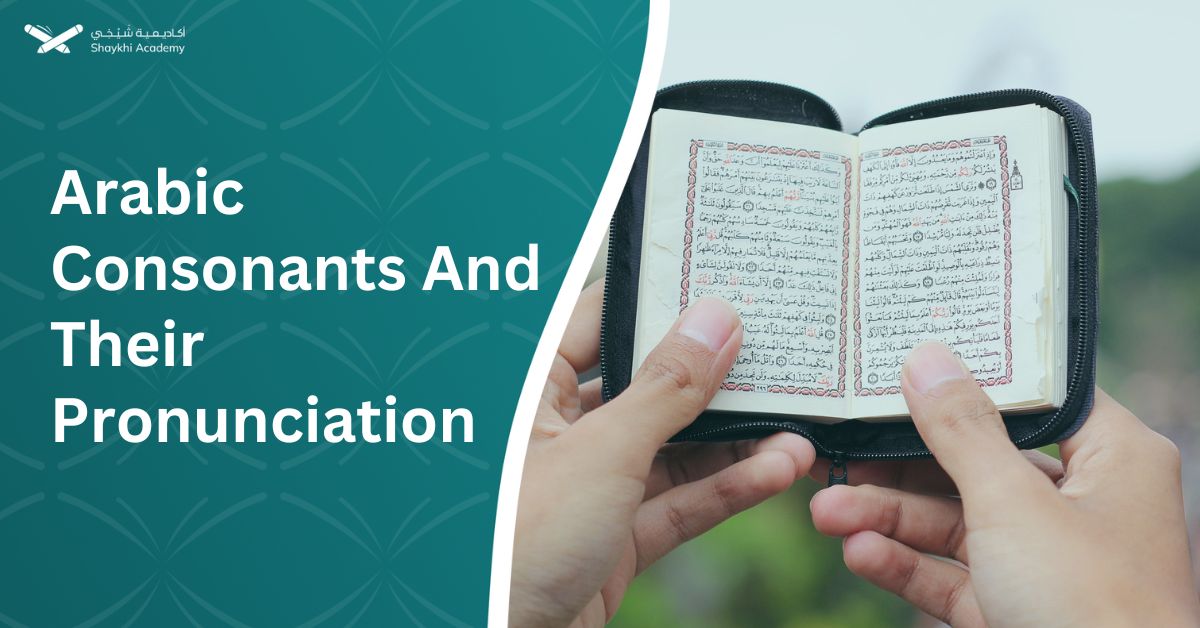In this article, we will delve into the significance, pronunciation, and quantity of Arabic consonants. Acquiring knowledge about these fundamental aspects of the language will not only boost your understanding but also enhance your communication skills in Arabic.
Arabic is renowned for its distinctive sounds that give words a vibrant quality. Whether you have a curiosity about this captivating language or simply wish to expand your understanding of diverse writing systems, prepare yourself for an enlightening experience.
What Are the Arabic Consonants?
Arabic consonants play a crucial role in the Arabic language, as they form the foundation of words and contribute to their meaning. Each consonant has its distinct sound and pronunciation, which is represented by a specific letter in the Arabic alphabet.
The meaning of Arabic consonants lies not only in their sounds but also in how they combine with vowels and other consonants to create meaningful words.
In Arabic, there are various types of consonants, including dark and guttural ones. These different categories have unique characteristics that affect their pronunciation.
Understanding the meanings behind these diverse Arabic consonants is key to mastering proper pronunciation and comprehension while speaking or reading Arabic texts.
How Many Root Consonants Do Most Arabic Verbs Contain?
Arabic is a Semitic language that uses a root system to form words. Most Arabic verbs contain three root consonants, also known as triliteral roots.
1. Three Root Consonants in Arabic Verbs:
Most Arabic verbs contain three root consonants that serve as the core of the word and give it its fundamental meaning.
These three root consonants are derived from a triliteral (three-letter) verb pattern, which is a characteristic feature of Arabic grammar.
2. Determining Meaning through Root Consonants:
The combination of the three root consonants in a verb determines its basic meaning. The arrangement of these consonants within a specific verb pattern further modifies the meaning.
By understanding the structure and arrangement of the root consonants, learners can decipher the intended meaning of Arabic verbs more effectively.
3. Verb Scales and Patterns:
Arabic grammar encompasses ten common patterns or “verb scales” that represent different types of actions or states.
Each pattern consists of a specific arrangement of the three root consonants and additional vowels that modify the meaning further.
These patterns, such as Form I, Form II, and so on, add nuances and variations to the verb’s basic meaning.
4. Deriving Words through Vowel Changes and Affixation:
Changing the vowels and adding prefixes or suffixes to the root consonants allows for the derivation of thousands of words with distinct meanings.
This flexibility in word formation is a characteristic feature of Semitic languages, including Arabic.
Different vowel patterns applied to the root consonants enable the creation of nouns, adjectives, active participles, and passive participles.
5. Importance of Identifying and Manipulating Root Consonants:
Understanding how to identify and manipulate the root consonants is crucial for learning Arabic vocabulary and constructing sentences correctly.
It enables learners to recognize patterns in words across different contexts, enhancing their overall comprehension skills.
Recognizing the trilateral structure of Arabic verbs also empowers learners to predict the meanings of unfamiliar words by focusing on the root consonants and applying their knowledge of verb patterns.
If you’re interested in mastering Quranic Arabic or expanding your knowledge beyond basic conversation, consider enrolling in an Online Quranic Arabic Course at Shaykhi Academy.
How to Pronounce the Arabic Dark Consonants?
To pronounce the Arabic dark consonants, it is important to understand their specific articulation. The dark or emphatic consonants in Arabic are pronounced with an emphasis on the back of the tongue approaching the pharynx or with velarization. Let’s take a look at the specific dark consonants and their pronunciation:
1. ص (ṣād):
The Arabic dark consonant (ص) is a voiceless emphatic dental fricative. To pronounce it, place the tip of your tongue against the back of your upper teeth, creating a narrow opening, and exhale air forcefully through this opening. It is similar to the “s” sound in English
2. ط (ṭāʾ):
The Arabic dark consonant (ط) is a voiceless emphatic dental plosive. To pronounce it, place the tip of your tongue against the back of your upper teeth, completely blocking the airflow, and release the blockage with a strong burst of air. It is similar to the “t” sound in English
3. ظ (ẓāʾ):
The Arabic dark consonant (ظ) is a voiced emphatic dental fricative. Place the tip of your tongue against the back of your upper teeth and exhale air through the narrow opening while creating a vibration. It is similar to the sound “th” in the English word “this,” but with a darker or backed quality.
4. ض (ḍād):
The Arabic dark consonant (ض) is a voiced emphatic dental plosive. Place the tip of your tongue against the back of your upper teeth, blocking the airflow completely, and release the blockage with a strong burst of air. It is similar to the sound “d” in the English word “dog,” but with a darker or backed quality.
5. ق (qāf):
The Arabic dark consonant (ق) is a voiceless uvular stop. To pronounce it, raise the back of your tongue towards the soft palate, creating a closure, and then release the closure with a sudden burst of air. Do not confuse it with the “k” sound in English, as it has a deeper and more guttural quality.
6. خ (khāʾ):
The Arabic dark consonant (خ) is a voiceless velar fricative. To pronounce it, raise the back of your tongue towards the soft palate, creating a narrowing, and exhale air through this narrow opening. It is similar to the sound “ch” in the Scottish word “loch” or the German word “Bach.”
7. غ (ghayn):
The Arabic dark consonant (غ) is a voiced velar fricative. To pronounce it, raise the back of your tongue towards the soft palate, creating a narrowing, and exhale air through this narrow opening while creating a vibration. It is similar to the sound “gh” in the French word “région” or the Spanish word “juego.”
It is important to practice these sounds with native speakers at Shaykhi Academy to ensure accurate pronunciation. Keep in mind that these dark consonants may require some time and practice to master, but with persistence, you can improve your pronunciation.
How to Pronounce Arabic Guttural Consonants?
Pronouncing Arabic guttural consonants can be a bit challenging for non-native speakers. The three guttural consonants you mentioned are ح (ḥā’), ء (hamza), and ع (‘ayn). Here’s how to pronounce them:
1. ح (ḥā’):
The ح (ḥā’) letter is pronounced by creating a constriction at the back of the throat, similar to the sound produced when saying “ha” in English. However, the sound should be more guttural and deeper. It’s like a forceful exhalation with your throat constricted.
2. ء (hamza):
Hamza is represented by a glottal stop, which is a pause or catch in the voice caused by the closing of the vocal cords. It’s not a specific sound but rather a pause or a brief moment of silence. It’s similar to the sound made between the syllables of the English word “uh-oh” or the sound between the two vowels in the word “uh-uh.”
3. ع (‘ayn):
The ع (‘ayn) letter is unique and doesn’t have an exact equivalent in English. It’s commonly described as a voiced pharyngeal fricative. To pronounce it, start by pretending to swallow something while keeping your throat relaxed. As you do this, push a little bit of air through the back of your throat. The sound produced should be a deep, guttural sound. It may take some time and practice to get the pronunciation right.
If you want to master these unique sounds and further enhance your Arabic language skills, consider enrolling in our Learn Arabic Online course at Shaykhi Academy.
Linguistics 3 Consonants Arabic
We will explore the concept of 3 consonants in Arabic linguistics and its significance in the morphology of Arabic words.
1. Definition of 3 Consonants:
In Arabic linguistics, the term “3 consonants” refers to a common pattern found in the morphology of Arabic words. Most native Arabic words have a root consisting of three consonant sounds, which serve as the core or base of the word.
2. Root Letters or Radicals:
The three consonants, known as the root letters or radicals, form the foundation upon which different word forms and meanings are built. These root letters provide the essential meaning and semantic core of the word.
3. Example of 3 Consonants Root:
To illustrate this concept, let’s consider the Arabic root “كتب” (k-t-b). This root consists of the three consonants /k/, /t/, and /b/. The root “كتب” is associated with the general meaning of “writing.”
4. Derivation of Words from the Root:
By adding different patterns of vowels and additional consonants to the root “كتب,” a wide range of words can be derived. For example, the verb “كَتَبَ” (kataba) means “he wrote,” and the noun “كِتَاب” (kitāb) means “book.” Other words such as “مَكْتَب” (maktab, office) and “كَاتِب” (kātib, writer) can also be derived from this root.
5. Comparison with Roots Consisting of Four Consonants:
While Arabic linguistics recognizes both roots consisting of three consonants and those consisting of four consonants, roots with three consonants are more widespread in the language. They form the majority of Arabic words and play a crucial role in linguistic analysis and understanding.
6. Role of Root-Based Morphology:
The concept of root-based morphology is a fundamental aspect of Arabic linguistics. Understanding the structure and formation of Arabic words requires knowledge of the three consonant roots, their variations, and the patterns used to derive different word forms.
Learn the Language of the Arab World: Discover Online Fusha Classes at Shaykhi Academy!
Shaykhi Academy offers online Fusha Arabic classes, providing learners with the opportunity to master the formal Arabic language. These classes are designed to enhance communication skills and foster a deeper understanding of Arabic grammar and syntax.
Furthermore, students can take advantage of the Al-Menhaj book, which is accessible at no cost. This valuable resource guarantees that learners understand the rules of reading the Quran correctly, making their Arabic learning experience thorough and fulfilling.
By enrolling in our online Fusha Arabic classes at Shaykhi Academy and utilizing the Al-Menhaj book as a resource, you’ll be able to enhance your understanding and fluency in Arabic.
Conclusion
Arabic consonants play a vital role in the structure and pronunciation of the language. Most Arabic verbs are made up of three root consonants, which form the basis for various word formations and meanings.
The pronunciation of dark and guttural consonants may be challenging for non-native speakers, but with practice and guidance from qualified instructors, it can be mastered.
To enhance your understanding of Arabic and improve your language skills, you may want to enroll in online courses at Shaykhi Academy and use resources like the Al-Menhaj book.

































